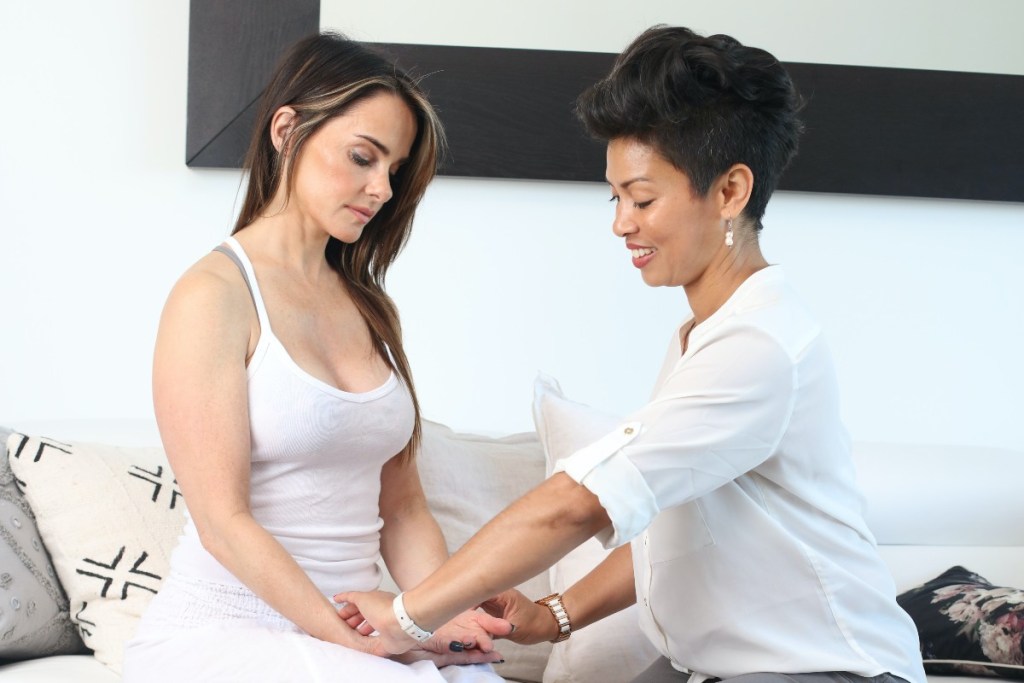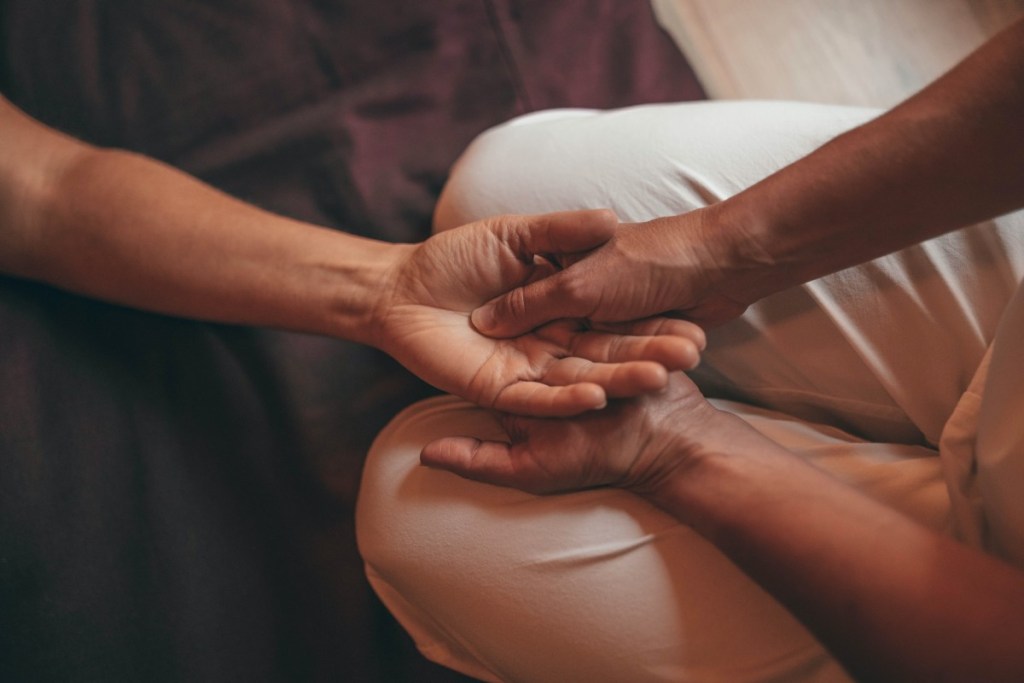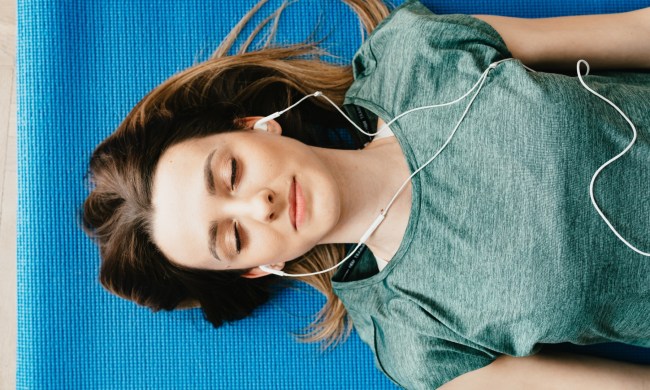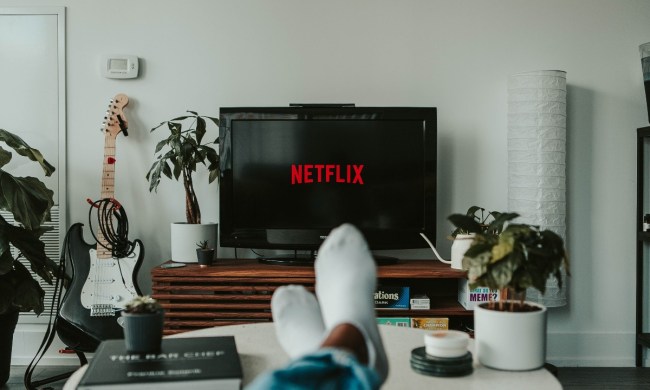Aches and pains are common, particularly if you have a chronic illness or are prone to migraines. If you’ve been managing pain, you’ve likely tried every treatment under the sun, including medicine, physical therapy, massages, and the like. To add another pain relief method to your arsenal, consider acupressure.
Acupuncture and acupressure are not necessarily the same thing, though they both began in ancient China. Acupuncture involves a professional sticking hair-thin needles into acupoints to stimulate them. It’s typically a stronger stimulation than acupressure, a form of acupuncture, which uses a firm massage to stimulate the same pressure points.
Ready to release all that pain and tension from your muscles? Consider this your guide to common acupressure points, benefits, risks, and more.

What is acupressure commonly used to treat?
Acupressure can treat various mental and physical health issues, and, unlike acupuncture, you can do it yourself from the comfort of your home. It’s a natural method as well, making it ideal for people who want to explore options other than medications for whatever reason. If you’re battling serious pain, consult your doctor who can better advise you on all of your treatment options.
Massaging acupressure points can treat:
- Headaches
- Soreness or stiffness in joints and muscles
- Allergies
- Sleep troubles
- Digestive issues
- Anxiety, depression, chronic stress, or other mental health issues
- Nausea or vomiting, including morning sickness during pregnancy
- Rheumatoid arthritis
Everyone’s bodies are different, but if acupressure works for you, consider adding it to your self-care routine to keep you feeling well-rested, happier, and healthier.
What are common acupressure pressure points and uses?
Common acupressure points and uses include:
- Large Intestine Channel L14: This pressure point, located between the thumb and index finger on the back of your hand, often provides pain relief. It may also boast anti-inflammatory powers when stimulated and can help reduce fevers.
- Stomach Channel, ST36: Stimulating this point just below your knee is known to reduce fatigue and issues relating to gut health.
- Spleen, SP6: Firmly massage this pressure point to improve digestive and immune health. You can find it a touch above your ankle on the inside of your leg.
- Heart Channel, HT7: If you’re feeling down mentally, look for this pressure point on the outside of your wrist. The potential benefits of massaging it include reduced fatigue, insomnia, and depression.
- Liver, LV3: Headaches are a pain — literally. Reduce symptoms by massaging this point, located in between your big and second toes.

How does acupressure work
Acupressure involves finding pressure points and giving them a firm massage. This treatment isn’t the light massage your partner or a masseuse gives you to relax. For best results, apply direct, firm pressure to the point, even though it may feel a little uncomfortable. This is because the aim is to stimulate your central nervous system, not just the muscle or nerve. As a result, your body releases chemicals into your muscles, spinal cord, and brain to promote natural healing, enhancing your physical and mental health.
The number of times you need to do acupressure may be different from someone else. Some only require one session, but those with chronic conditions may need multiple treatments per week and may even benefit from seeing a professional.
Acupressure sounds great. Are there safety risks?
Though acupressure can be healing, there are a few things to keep in mind to make sure you do more good than harm. It’s important to apply pressure correctly. If you don’t, you could hurt yourself. University of Maryland Medical Center has an in-depth YouTube video explaining how to do acupressure yourself.
If you’re nervous or want a more experienced hand, make an appointment with a licensed acupuncturist a few times to learn what to do. As always, discuss treatments with your doctor first to ensure you’re a good fit, and if you feel intense pain, stop treatment immediately.
Acupressure is an ancient, natural alternative medicine technique. It’s a bit different than traditional acupuncture, but it can treat many of the same issues, including muscle and joint pain, digestion, and mental health. Though you can DIY, it’s important to apply the pressure correctly and to the right area of the body to ensure you don’t hurt yourself. Get ready to feel all that tension melt away as you explore all of the benefits of acupressure.
BlissMark provides information regarding health, wellness, and beauty. The information within this article is not intended to be medical advice. Before starting any diet or exercise routine, consult your physician. If you don’t have a primary care physician, the United States Health & Human Services department has a free online tool that can help you locate a clinic in your area. We are not medical professionals, have not verified or vetted any programs, and in no way intend our content to be anything more than informative and inspiring.



